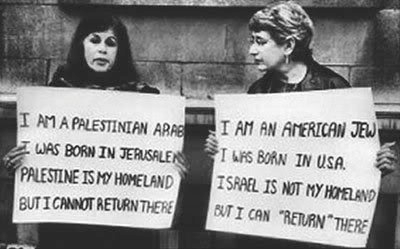"'The tragedy of Zionism,' Walter
Laqueur wrote in his standard
history, 'was that it appeared on
the international scene when
there were no longer empty
spaces on the world map.'
"This
is not quite right.
"Rather it was
no longer politically tenable to
create such spaces:
extermination had ceased to be
an option of conquest. (5)
"Basically the Zionist movement
could only choose between two
strategic options to achieve its
goal: what Benny Morris has
labeled 'the way of South Africa'
- 'the establishment of an
apartheid state, with a settler
minority lording it over a large,
exploited native majority' - or
the 'the way of transfer'- 'you
could create a homogenous Jewish
state or at least a state with an
overwhelming Jewish majority by moving or transferring all or
most of the Arabs out.'" (6)
Transfer is still the preferred option for all good Zionists; however, with nearly equal numbers of Jews and Arabs living between the River and the sea, an apartheid state modeled on White South Africa seems a more likely option.
"Israel confronted the same dilemma
after occupying the West Bank and
Gaza as at the dawn of the Zionist
movement: it wanted the land but
not the people.
"Expulsion, however,
was no longer a viable option. In the
aftermath of the brutal Nazi
experiments with and plans for
demographic engineering,
international public opinion
had ceased granting any
legitimacy to forced population
transfers.
"The landmark Fourth
Geneva Convention, ratified in
1949, for the first time
'unequivocally prohibited
deportation' of civilians under
occupation (Articles 49, 147). (25)
"Accordingly Israel moved after the
June war to impose the second of its
two options mentioned above -
apartheid.
"This proved to be the
chief stumbling block to a
diplomatic settlement of the Israel
Palestine conflict.
5. Excerpt 2: ?An Introduction to the Israel Palestine Conflict? | michaellevinmusic | Michael Levin
